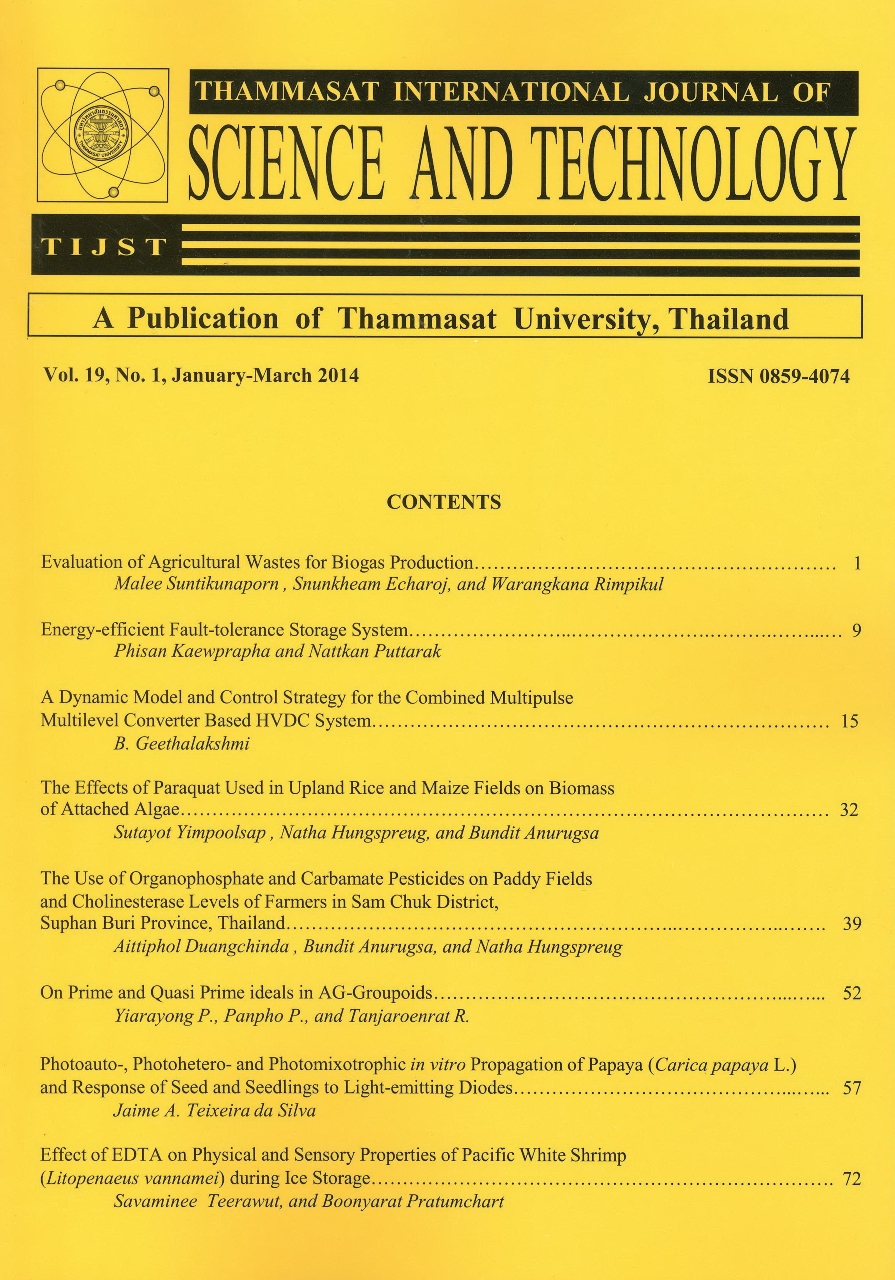Factors Affecting the Production of Extracellular Xylanase by Bacillus sp. GA2 (1) and Application for Oligosaccharides Production
Main Article Content
Abstract
Endo-1,4-β-Xylanases (1,4-β-D-xylanohydrolase, EC.3.2.1.8) depolymerised Xylan, a major component of hemicellulose, by the random hydrolysis of xylan backbone. The concentrations of enzyme production medium (EPM) and conditions for xylanase production from Bacillus sp. GA2(1) were investigated. Bacillus sp. GA2(1) was cultured in nutrient broth at 37C for 16-18 h. After that, the culture was transferred to EPM containing 5 g/l yeast extract, 0.2 g/l MgSO4.7H2O, 1 g/l KH2PO4, 5 g/l peptone and 5 g/l corn cobs, called controlled EPM. The concentrations of EPM in the range of 0-5 g/l for yeast extract, 0-0.4 g/l for MgSO4.7H2O, 0-2 g/l for KH2PO4, 0-5 g/l for peptone and 0-5 g/l for corn cobs were evaluated by comparing xylanase activities to that of the controlled EPM. The experiments showed the highest xylanase activity of 0.23 U/ml with EPM composing of 2 g/l yeast extract, 0.3 g/l MgSO4.7H2O 1 g/l, KH2PO4, 2 g/l peptone, and 3 g/l corn cobs. The initial pH and the optimum temperature of EPM for xylanase production were studied. The maximum xylanase activity of 0.45U/ml was found at the initial pH and EPM temperature of 7.0 and 37°C, respectively. The agricultural wastes, corn cobs, sugarcane bagasses, coffee residues, soybean meal, potato peels and copra meal were selected for oligosaccharide production. The reducing sugar amounts represented the amounts of oligosaccharides that were analyzed by dinitrosalicylic acid methods. The highest reducing sugar of 412.49 μg/ml was obtained from sugarcane bagasses hydrolysate.
Article Details
How to Cite
Chantorn, S., Jitprom, N., & Apiraksakorn, J. (2015). Factors Affecting the Production of Extracellular Xylanase by Bacillus sp. GA2 (1) and Application for Oligosaccharides Production. Science & Technology Asia, 20(2), 21–26. retrieved from https://ph02.tci-thaijo.org/index.php/SciTechAsia/article/view/35776
Section
Biological sciences


